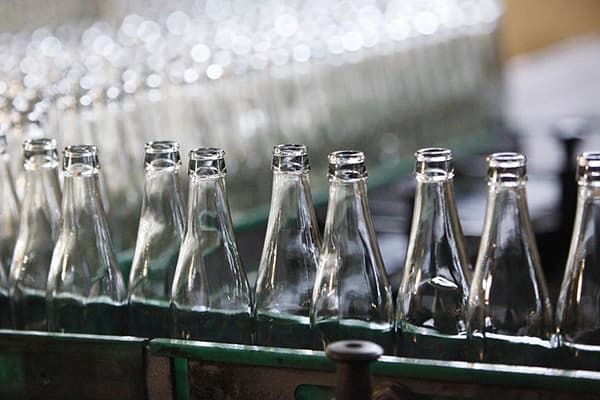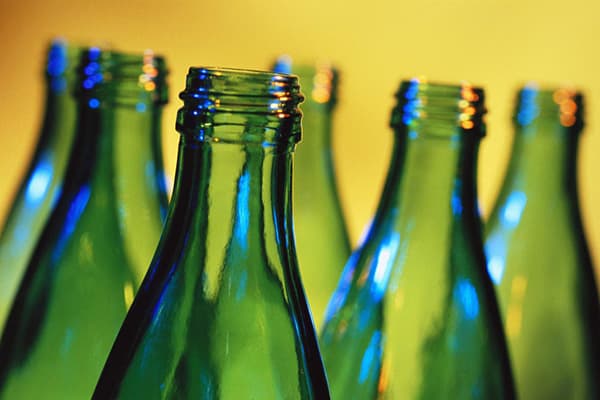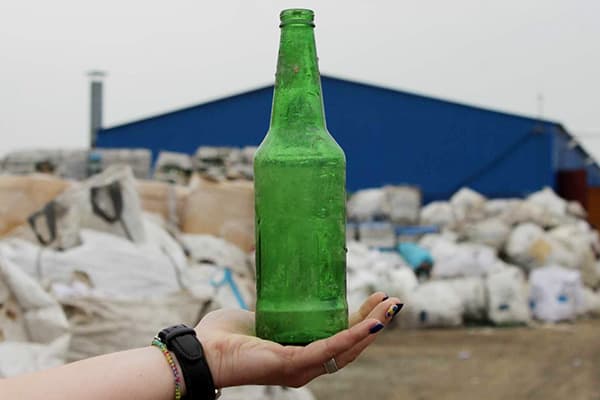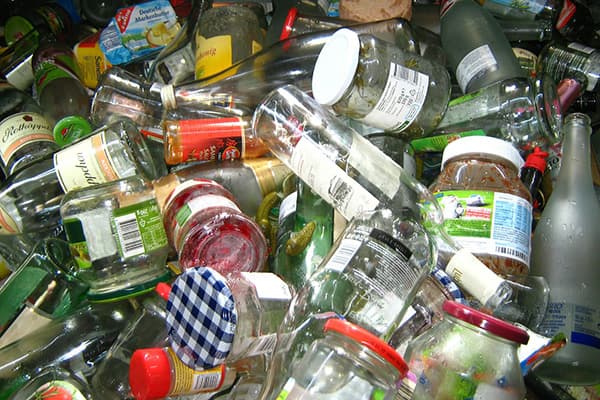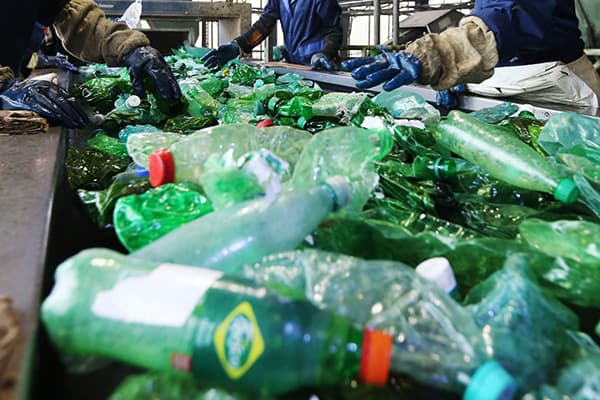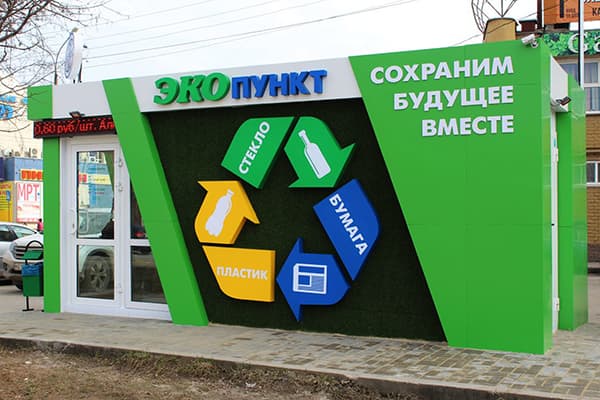What bottles can be taken to a glass collection point?
Reuse of resources is an important direction in the development of modern culture and technology. Today, many people know that empty glass bottles are accepted at glass container stores, but not everyone understands the rules for acceptance. Let's find out what regulations apply to accepted glass and plastic, where the collected containers then go, and whether you can get rich by handing over bottles for reuse.
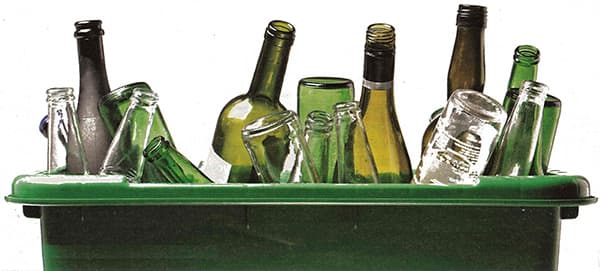
Glass or glass containers: what is the difference?
Reception of glass bottles was carried out in the USSR in accordance with the concept of “collateral value”. When purchasing a liter bottle of lemonade in a store for 25 kopecks, the buyer paid only 5 kopecks for the lemonade. The rest of the price was the deposit cost of the bottle. Returning it to the glass container collection point, the buyer returned 20 kopecks.
This mechanism encouraged the population to carefully handle glass containers, collect them and regularly return them for reuse. The containers collected through collection points passed through industrial washing lines and were used again. Each bottle could last several years, going through many cycles.
Today, glass is accepted according to two schemes:
- Reception of glass for recycling. This scheme involves recycling bottles into cullet. Then the broken glass is melted and new glass products are made from the resulting mass.This is a more expensive method of recycling, so the amount given out for each unit of dishes returned will be small. However, the returned containers can be of any shape and condition (chipped and cracked bottles are also recycled).
- Acceptance of returnable packaging. In this case, the bottle is not melted, but only washed from dirt and disinfected. It is then re-entered into the bottling lines. The main disadvantage of this scheme is the difficulties with logistics. If each manufacturer uses a different glassware standard, it becomes too expensive and difficult to ship bottles for reuse.
The scheme for the use of returnable packaging sold with a deposit value works in Finland, Denmark, Germany, and Luxembourg. These countries have strict packaging standards that greatly facilitate the process of collecting, sterilizing and delivering bottles to manufacturers.
In the summer of 2019, Dmitry Medvedev instructed three interested departments (the Ministry of Economic Development, the Ministry of Industry and Trade and the Ministry of Natural Resources) to work out options for implementing trade using reusable packaging and the concept of collateral value. However, in most cases, glass bottles are accepted today only for subsequent recycling.
Requirements for accepted glass products
In order for glass containers to be reused after minor disinfection, they must meet fairly stringent requirements.
5 mandatory main conditions:
- No cracks, chips or other defects.
- Cleanliness of external and internal surfaces.
- The labels and the adhesive from them have been completely removed.
- Each box contains containers of only one type (volume, size, shape, glass color).
- The willingness of enterprises to purchase this type of container for bottling products. The last factor is often the leading factor in pricing: after all, not a single point will accept glassware that it cannot then sell at a profit.
In addition, products that can be reused must bear the “GL70” marking. Without this marking, glass collection points will refuse to buy the bottle from the collector. The absence of markings indicates that the dishes are not designed for sterilization. Also, bottles with original designs are often not accepted: only the manufacturer is ready to buy them, and delivery is not always profitable.
Types of bottles used as returnable packaging
The use of returnable packaging is associated with benefits for the manufacturer: buying a bottle from a collecting company is several times cheaper than from the manufacturer. Therefore, many factories involved in the production and bottling of milk, strong alcohol, beer, wine and carbonated drinks encourage the organization of collection points for glass containers.
Bottles with volumes from 0.33 l to 0.75 l are collected. Containers are divided into categories according to different criteria:
- Volume. These are 0.33 l, 0.5 l, 0.75 l. Other categories are accepted extremely rarely, since it is difficult to collect them in large enough quantities to deliver to the end buyer.
- Purpose. The dishes are divided into wine, vodka, beer bottles, as well as champagne bottles. Most collection points do not accept non-standard bottles (for example, flat containers of cognac or whiskey), since they are handed over in much smaller quantities and it is difficult to quickly form a batch for sending to the factory.
- Color. At collection points, glassware is sorted into clear, green and brown glass.The last two groups are more in demand: they are readily purchased by beer production plants. Other colors are not accepted for reuse.
Other categories of glass bottles are accepted only as broken glass or not accepted at all. Reception of broken glass is associated with additional difficulties: the need for additional equipment and the cost of remelting. Combined with the low price of secondary raw materials, these factors make the collection of broken glass a low-profit enterprise.
Jars and other glass items
Glass jars used for canning are a popular type of returnable packaging. They are readily purchased by factories involved in processing agricultural products. In addition, the population actively purchases such dishes directly from collection points (especially during the summer harvesting season). Therefore, banks accept at a higher price.
The following categories are most in demand:
- 3 l. This volume is intended for canning juices and pickles.
- 2 l. Also in demand among gardeners and at enterprises that make canned vegetables.
- 1 l and 0.5 l. They are popular in the production of jams, preserves, vegetable stews, and squash caviar.
- 0.25 l. It got the name “mayonnaise” because it was previously used to package this sauce. Today, various sauces and canned fruits are packaged in jars of this size.
Other categories of glass jars are in much less demand. So, in most cases, points refuse to accept small jars of tomato paste, adjika, mustard, horseradish (or they only accept such containers as broken glass).This is due to great difficulties during transportation and difficulties in forming batches due to the wide variety of standards.
Sanitary regulations prohibit the reuse of baby food jars. Therefore, all that remains is to throw away such glass containers (or find a use for it in the household).
In most cases, collection points do not take medical utensils (penicillin bottles, medicines, eye drops, saline, etc.). However, pharmacies that produce such dosage forms often have a need for such containers and will willingly accept vials and jars for pharmaceutical purposes.
Features of recycling plastic bottles
Plastic bottles are also accepted for recycling. However, there are certain specifics in their use:
- Plastic will not withstand most radical disinfectants. It deforms due to temperature, and becomes cloudy and brittle due to radiation. Therefore, polymer bottles are not used as returnable packaging, but are only recycled.
- Transporting plastic recyclables is significantly difficult. Each bottle takes up a lot of space while containing only a small amount of material. Therefore, such bottles must be carefully flattened before delivery.
- There are many types of plastic, and the recycling process for each is specific. Therefore, collected secondary raw materials must be carefully sorted into groups.
The marking in the form of a number enclosed in a triangle of arrows will help determine the suitability of plastic for recycling and the material from which the bottle is made. The signs “1”, “2”, “4”, “5”, “6” indicate that plastic can be recycled, but most often only the first two categories are accepted.Marks “3” and “7” indicate that such plastic is not recycled in our country.
Often the cap is made of a different material, so caps and bottles are sent separately for recycling. There is also a situation where it is the caps, not the bottles, that are accepted for reuse.
Requirements for plastic bottles accepted for recycling
In order for plastic bottles to be accepted at a recycling collection point, they must be carefully prepared for delivery. Here is the algorithm for such preparation:
- Wash the bottle thoroughly to remove the contents and any dirt.
- Remove the cover and retaining ring.
- Completely wash the label and traces of glue from the bottle.
- Sort bottles and caps by material.
- Crumple the bottle so that as little air as possible remains inside.
Such careful preparation requires a lot of time and labor. Combined with the low cost per bottle, collecting plastic raw materials is unfortunately often an activity with minimal profitability. Fortunately, in large cities this situation is gradually improving thanks to support from the government, business and non-profit organizations.
Why is it necessary to collect glass and plastic?
Collecting and reusing glass allows you to save natural resources: sand, soda and other material components used to make bottle glass. In addition, glass melting is a process that requires large amounts of energy (in our country natural gas plays this role). Plastic production also consumes the most valuable types of hydrocarbon raw materials: oil, natural gas, coal.
All of the listed types of raw materials belong to the category of non-renewable resources, so reusing glass is the key to resource security in the future. Attention to recycling is inextricably linked to the development of environmental thinking.
The economic aspect is also of considerable importance. The cost of producing a new bottle is 2–3 times higher than the cost of recycling, and 5–10 times higher than the cost of using recyclable containers. The widespread introduction of recycling processes can improve the economy and create new jobs.
So far, the rate of glass recycling and reuse in our country is depressingly low. According to FEVE (European Federation of Container Glass), in 2013, only 13% of glass sold in Russia was recycled. And in Denmark, Sweden, and Luxembourg, at least 95% of bottles and cans sold in stores are recycled!
Despite temporary difficulties, recycling broken glass and plastic bottles, as well as the use of reusable packaging, are trends without which the modern economy cannot be imagined. Today, everyone can help the planet, while becoming richer not only spiritually, but also materially. It's worth trying for this, isn't it?
